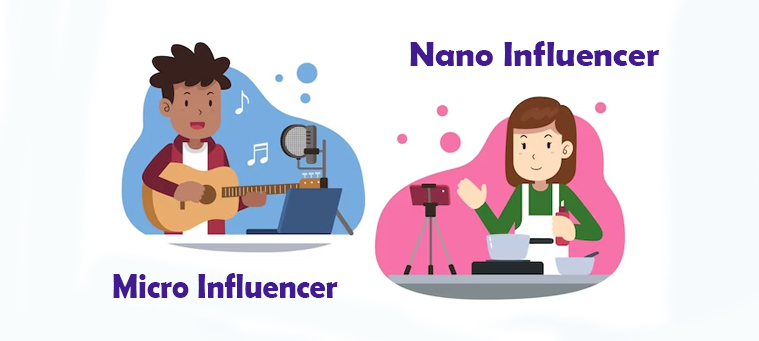Influencer marketing refers to a promotional tactic whereby brands collaborate with influencers – individuals who have built a strong, loyal social media following in their niche. Influencers provide brand exposure to their audience through sponsored content, endorsements, product gifting, and other partnership arrangements.

However, many companies fail to utilize influencer marketing to its full potential. Avoid common mistakes with this guide to influencer marketing best practices and pitfalls to avoid.
| Dos ✅ | Don’ts ❌ |
| ✅ Identify clear campaign goals | ❌ Fail to define metrics for success |
| ✅ Determine target audience and best platforms | ❌ Focus solely on follower count |
| ✅ Thoroughly research potential influencers | ❌ Partner with irrelevant influencers |
| ✅ Prioritize authenticity and passion | ❌ Neglect influencers post-campaign |
| ✅ Treat influencers like true partners | ❌ Overly control messaging |
| ✅ Maintain longer-term relationships | ❌ Use deceptive tactics |
| ✅ Encourage authenticity | ❌ Obsess over vanity metrics |
| ✅ Disclose per FTC guidelines | |
| ✅ Analyze performance data | |
| ✅ Continually refine the approach | |
| ✅ Test various influencer platforms | |
| ✅ Address both praise and criticism |
The Dos of Influencer Marketing

Image Credit: Analisa
- Define Concrete Campaign Goals and Metrics
Clearly defining campaign goals and success metrics upfront provides the foundation for effective influencer marketing. Common goals include raising awareness, improving brand perception, driving conversions, and boosting engagement and website traffic. Core objectives set, identify key quantifiable metrics like impressions, reach, engagement, clicks, and conversions to track. Monitoring measurable metrics is critical for calculating campaign ROI.
- Thoroughly Vet Potential Partners
Thorough vetting in selecting partners is crucial beyond just analyzing follower counts. Consider content quality, audience engagement, niche relevance, and brand fit. Prioritize influencers with genuinely engaged followings versus inflated metrics. Personality and values alignment also matters. Thoughtful vetting leads to ideal partnerships. Or you can rely on agencies who specialize in influencer marketing to do the vetting for you.
- Encourage Authenticity in Messaging
Research shows overly promotional messaging from influencers sees lower engagement. Allow influencers flexibility to showcase products using their authentic voice versus rigid branding guidelines. Trust their expertise in engaging audiences. Prioritize authenticity over marketing propaganda.
- Track Longer-Term Brand Impact
Don’t limit measurement to direct sales alone. Consider brand awareness, favorability over time, audience reach, organic traffic, and consumer trust halo effects. Influencer storytelling provides lasting brand building versus just short-term conversions. Take a long-view approach.
- Maintain Lasting Influencer Relationships
Look beyond one-off transactions. Lasting partnerships lead to enduring brand advocates. Maintain communication after campaigns, provide early access and insider information, involve them as brand ambassadors, recognize their work, and build genuine relationships. Continually engage.
- Stay Updated on Emerging Platforms and Innovations
Stay current on the latest influencer platforms, features and innovations. Explore niche networks, attend conferences, join communities, and partner with agencies. An in-depth understanding of this dynamic landscape is essential to remain competitive.
The Don’ts of Influencer Marketing

Image Credit: Combin
- 1. Disregard FTC Disclosure Guidelines
Any paid or sponsored influencer content must comply with Federal Trade Commission disclosure regulations. Both brands and influencers share responsibility in transparently communicating partnerships by including #ad or #sponsored in posts.
Failing to properly disclose material connections erodes audience trust and exposes brands to major legal and reputational risks. A 2019 FTC crackdown fined companies like Lord & Taylor and Warner Bros. millions for deceptive influencer practices. Avoid any tactics that misconstrue relationships.
- 2. Obsess Over Vanity Metrics
Social platforms provide volumes of data, but not all metrics matter. Vanity stats like video views, likes, and follower growth don’t directly correlate to bottom-line business value.
Rather than fixating on general awareness numbers, hone in on actionable data tied to goals like website traffic, conversions, or sales. Judging campaign success by conversions versus vanity metrics leads to smart optimization.
- 3.Neglect Audience Feedback
Influencer content commonly provokes a range of audience commentary from positive to negative. Yet brands should embrace all feedback as an asset.
Monitoring what resonates based on engagement and positive comments guides content strategies. Meanwhile, addressing constructive criticism presents opportunities for improvement and shows audiences the brand listens.
- 4. Fail to Properly Vet Influencers
Selecting influencers based solely on follower counts or vanity metrics is a common mistake. But high numbers can be misleading, purchased, or full of ghost accounts.
More important is vetting for authentic engagement, relevant reach, and passion for a brand. Otherwise, even influencers with enormous theoretical audience size will fail to deliver results. Proper due diligence is essential.
- 5. Give Influencers Excessive Creative Control
While influencer independence should be encouraged, handing over complete creative control can be problematic. Brands must ensure proper messaging, compliance, and overlap with broader initiatives.
Finding a balance between creative freedom and oversight preserves authenticity while ensuring brand security and consistency. Maintaining open communication and mutually understood expectations is key.
Frequently Asked Questions
- What are the benefits of influencer marketing?
Key benefits include expanded reach, improved brand awareness and affinity, increased website traffic and conversions, and amplified content engagement.
- How do you measure the success of influencer marketing campaigns?
Key metrics include impressions, reach, engagement, clicks, conversions, website traffic, sales, and brand awareness/favorability surveys over time.
- What platforms are best for influencer marketing?
Major platforms like Instagram and YouTube given their large user bases. But niche apps like Twitch also provide influencer opportunities for specific verticals and audiences.
- How much should brands pay influencers?
Influencer pay varies based on followers, engagement, quality, and niche. Micro-influencers earn hundreds per post, celebrities earn thousands+. Payment is usually CPM- or engagement-based, or a flat campaign fee.
Summing Up
Influencer marketing can deliver immense value for brands when executed strategically. It starts with defining goals, vetting partners thoroughly, encouraging authentic messaging, tracking comprehensive metrics, building genuine relationships, and staying atop current trends. Avoiding common pitfalls like lack of disclosure or oversight is also key. Following best practices in leveraging influencers to amplify brand reach and engagement can significantly impact performance when done thoughtfully.

